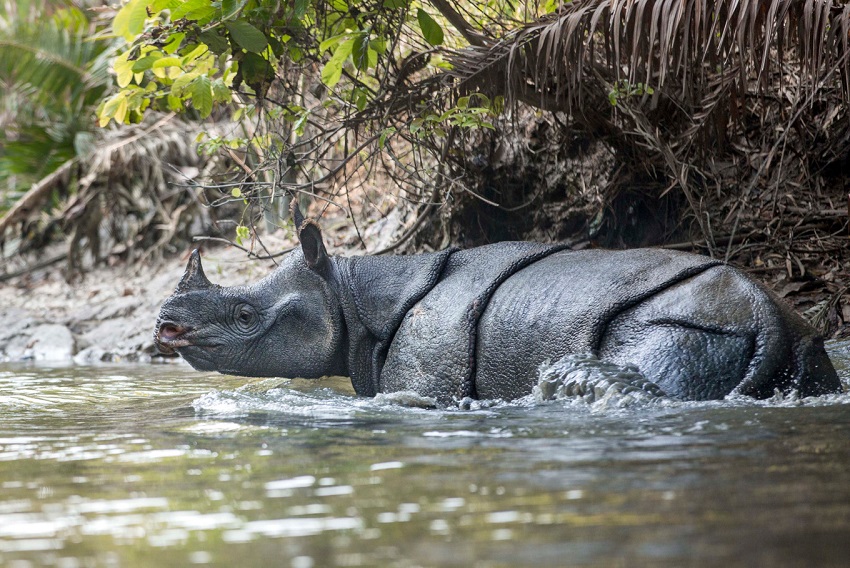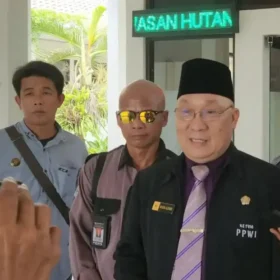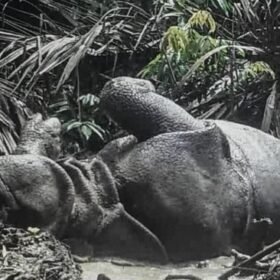Javan Rhino Expedition is a project initiated by young Indonesian conservationists, one of whom is David Herman Jaya, an alumnus of the Faculty of Art and Design at Tarumanagara University.
Coinciding with World Rhino Day on September 22, 2020, the Javan Rhino Expedition team officially launched a book titled “Javan Rhino Expedition – Surviving in Silence”. The book is a collection of stories from the Javan Rhino Expedition team in their campaign to conserve the Javan Rhino in Indonesia.

Purpose of the Javan Rhino Expedition
The Javan Rhino Expedition was established with the aim of raising awareness—particularly among urban communities—about the life traces of the Javan Rhino in Ujung Kulon National Park, while also showcasing the local traditions that support both the Javan Rhino and broader nature conservation efforts.

Inspiring Stories Behind Javan Rhino Conservation
The inspiring stories of the people behind the conservation of the Javan Rhino in Ujung Kulon are also captured in this expedition. These are individuals who deserve appreciation and recognition for their tireless efforts in preserving this iconic species and its habitat.
What’s the News on the Javan Rhino?
All of these fascinating stories are compiled in the book Javan Rhino Expedition – Surviving in Silence, which was officially launched during the webinar Apa Kabar Badak Jawa? (“What’s the News on the Javan Rhino?”).
The webinar was held via Zoom and opened at 14:00 by moderator Nur Arinta. The discussion began with a presentation from Ir. Anggodo, M.M, Head of Ujung Kulon National Park Authority, who spoke about the ongoing conservation efforts carried out by the park, in collaboration with local communities.
According to him, these efforts will continue to be strengthened, especially as two new Javan Rhino calves were born in the park in May and June. By monitoring rhino activity through camera traps placed every 2 kilometers throughout Ujung Kulon National Park, the team hopes to further safeguard the survival of the species.
To identify each individual Javan Rhino in the park, Asep Yayus Firdaus, a Forest Ecosystem Controller, explained that monitoring data is processed through footage collected from the camera traps. Clips are sorted, each rhino is identified, and then analyzed and mapped based on their unique morphological features.
Following this, David Herman Jaya elaborated on the Javan Rhino Expedition project and its mission to raise public awareness about the importance of preserving the Javan Rhino.
The expedition’s journey is fully documented in the newly launched book, which includes chapters such as Find the Legend, Ways, Time Sensitive, The Myth, The Huntsman, The Mestika, Unseen Assassin, and concludes with Hopes.
In addition to the book launch, there were also plans to hold a Photography and Fine Arts Exhibition featuring Indonesian artists, including two lecturers from the Faculty of Art and Design at Tarumanagara University. However, the exhibition had to be postponed due to Jakarta’s ongoing PSBB (Large-Scale Social Restrictions) and is scheduled to be held later in the year.
The webinar continued with a Q&A session moderated by Nur Arinta and concluded with questions from the media.
Message from the Head of Ujung Kulon National Park
Quoted from Mongabay.co.id, Anggodo, Head of Ujung Kulon National Park, stated in his foreword that although many studies have been conducted on Javan Rhino conservation in Ujung Kulon, the way the information is presented has not yet succeeded in capturing the attention of the wider public.
“It is very important to introduce the biodiversity and the culture of the communities around the national park through engaging photographs.”
Indeed, Ujung Kulon serves as an inspiration. Scientists, environmentalists, wildlife lovers, and the government work hand in hand to protect its exotic species.
“The rhino in Ujung Kulon is our hope, the world’s hope. A symbol of strength to endure amidst constant change,” said Ridzki R. Sigit, Program Manager of Mongabay Indonesia.
Sunarto, a wildlife ecologist, also shared his wisdom:
“The Javan Rhino is a source of knowledge. The pride and awareness of the community to support its conservation are crucial.”




